Mastering pivot point indicators involves grasping essential price data from past sessions and identifying key support and resistance levels. Traders calculate pivot points using high, low, and close prices, considering different types like Standard, Fibonacci, and DeMark. Utilizing pivot points in trade planning enhances decision-making, boosts trading efficiency, and maximizes profits. Strategies revolve around pivot point calculations, with an emphasis on efficiency and effectiveness in trading. By understanding the benefits and implementation of daily pivot points, traders can develop step-by-step strategies and execute them successfully. Explore further to uncover the intricacies of mastering pivot point indicators.
Understanding Pivot Point Basics
Utilizing the pivotal price data from the previous trading session, traders can derive essential support and resistance levels through the calculation of pivot points. These levels are vital in determining potential entry and exit points for trades. Pivot points serve as a key technical analysis indicator, aiding traders in identifying significant price levels where a shift in market sentiment may occur. By understanding how to calculate pivot points using the high, low, and close prices from the previous session, traders gain insights into potential price movements.
Moreover, pivot points are not just a single level but consist of multiple support and resistance levels, providing traders with a range of price points to consider. These levels act as a guide for setting stop-loss orders, determining profit targets, and overall risk management in trading strategies. By incorporating pivot points into their analysis, traders can enhance their decision-making process and increase the probability of successful trades. Understanding the basics of pivot points is foundational for traders looking to leverage this technical tool effectively in their trading approach.
Importance of Support and Resistance
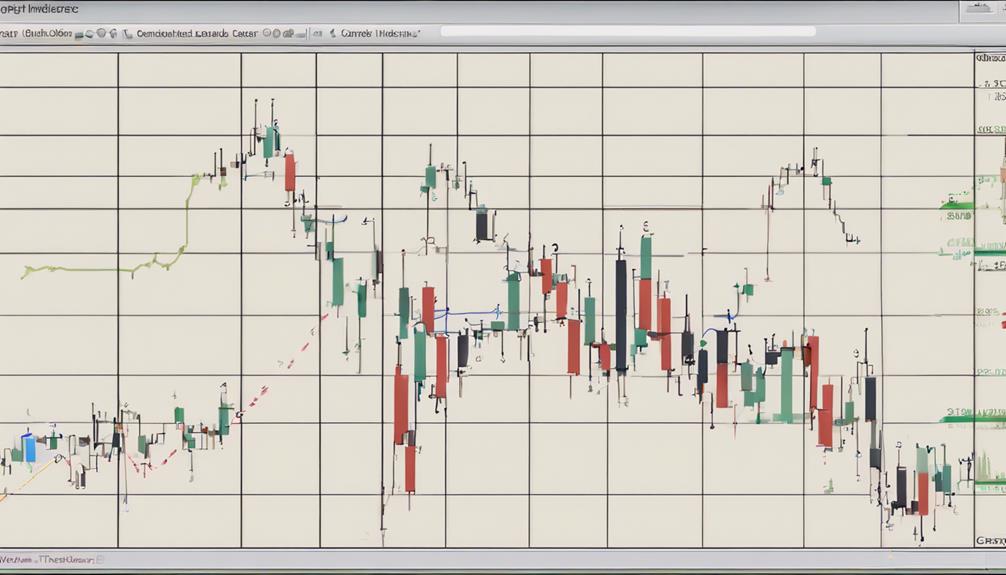
Support and resistance levels are foundational elements in technical analysis, serving as critical indicators for identifying potential price reversal points in trading scenarios. Support refers to a level where a downtrend might pause or reverse, while resistance indicates a point where an uptrend could stall or reverse.
Pivot points play a significant role in determining these support and resistance levels by analyzing the previous day's price action. Traders rely on understanding these levels to make informed decisions and effectively manage risks in the market.
By incorporating support and resistance levels into their strategies, traders can establish profit targets, set stop-loss levels, and pinpoint entry and exit points with more precision. Recognizing the importance of support and resistance not only enhances trading strategies but also aids in interpreting market dynamics and price movements, ultimately improving overall trading performance.
Calculating Pivot Points
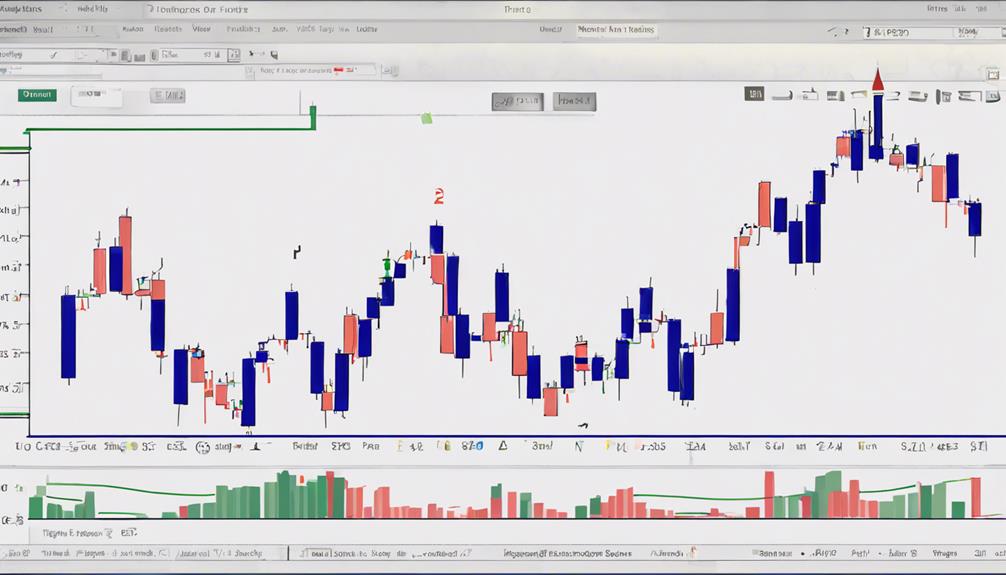
Pivot points are pivotal indicators in technical analysis derived from the high, low, and close prices of the previous trading session. These points help traders identify potential levels of support and resistance in the market. The central pivot point (PP) is a key calculation in this process, determined by averaging the high, low, and close prices and then dividing by 3. From this central pivot point, support and resistance levels are calculated, aiding traders in making informed decisions. Different types of pivot points, including Standard, Fibonacci, and DeMark, utilize unique formulas to calculate these support and resistance levels. Below is a table summarizing the calculation of pivot points:
| Calculation | Formula |
|---|---|
| Central Pivot Point (PP) | (High + Low + Close) / 3 |
| Support 1 (S1) | (2 * PP) – High |
| Support 2 (S2) | PP – (High – Low) |
| Resistance 1 (R1) | (2 * PP) – Low |
| Resistance 2 (R2) | PP + (High – Low) |
Understanding how to calculate pivot points is essential for traders to effectively utilize these indicators in their trade planning.
Incorporating Pivot Points in Trade Planning

Incorporating pivot points into trade planning enhances strategic decision-making by providing clear levels for entry and exit points based on previous session data. When traders utilize pivot points in their analysis, they can effectively determine key levels that act as support and resistance, guiding their trading decisions.
Here are four key ways in which incorporating pivot points can aid in trade planning:
- Identifying Entry Points: Pivot points serve as important markers for identifying ideal entry points into trades, allowing traders to capitalize on potential price movements.
- Setting Exit Points: By using pivot points, traders can establish predetermined exit points to secure profits or cut losses, improving overall risk management strategies.
- Establishing Profit Targets: Pivot points assist traders in setting realistic profit targets based on support and resistance levels, aiding in trade efficiency.
- Enhancing Technical Analysis: Pivot points act as a valuable technical analysis indicator, providing a structured framework for making informed trading decisions based on historical price levels.
Enhancing Decision-Making Process

Effective utilization of pivot point indicators plays a pivotal role in refining the decision-making process for traders in financial markets.
These indicators assist traders in identifying important support and resistance levels, enabling them to make well-informed trading decisions.
By leveraging pivot point calculations, traders can determine best entry and exit points for their trades.
Additionally, pivot point indicators provide clear reference points for setting stop-loss and take-profit levels, helping traders manage risk effectively.
Improving Entry and Exit Points
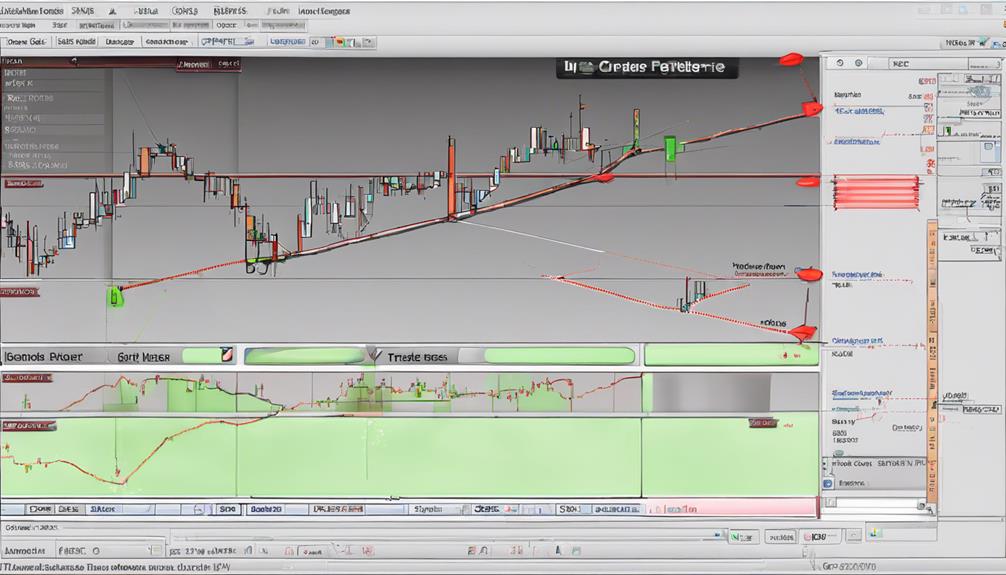
Precision in trade timing is essential for traders looking to optimize entry and exit points. By using pivot point indicators effectively, traders can enhance the accuracy of their trades by aligning them with key support and resistance levels.
Additionally, incorporating pivot points into risk management strategies allows for setting stop-loss orders and profit targets with greater precision.
Precision in Trade Timing
When aiming to enhance trade timing for best entry and exit points, traders rely on pivot point indicators to identify key support and resistance levels. By utilizing pivot points in their trading strategies, traders can pinpoint ideal entry and exit points, leading to more precise decision-making.
Here are some essential considerations for achieving precision in trade timing with pivot points:
- Identify Strong Support and Resistance Levels: Pivot points help traders recognize significant price levels where the market is likely to reverse or continue its trend.
- Utilize Pivot Point Signals: These indicators offer clear signals that assist in determining potential market movements, aiding in timing trades accurately.
- Incorporate Pivot Points in Trading Strategies: Integrating pivot points into trading plans enhances the accuracy of entry and exit decisions.
- Interpret Pivot Point Indicators: Understanding how to interpret pivot point signals is important for making well-informed trading decisions in volatile market conditions.
Enhancing Trade Accuracy
Enhancing trade accuracy through the improvement of entry and exit points is a vital aspect of optimizing trading strategies for increased precision and profitability. Pivot point indicators play a pivotal role in this process by helping traders identify key support and resistance levels, which are essential for making informed decisions on entry and exit points.
By integrating pivot points into their trading strategy, traders can enhance their trade accuracy by ensuring they enter and exit positions at opportune moments. This approach minimizes guesswork and emotional trading, leading to more calculated decisions.
Ultimately, a well-executed utilization of pivot point indicators can greatly boost trading success and overall profitability, making them an essential tool in a trader's arsenal.
Effective Risk Management
Improving entry and exit points through effective risk management strategies is fundamental for traders seeking to optimize their trading performance using pivot point indicators.
- Setting Stop Loss Orders: Placing stop-loss orders at key support or resistance levels helps limit potential losses and protect capital.
- Identifying Best Entry Points: Using pivot points assists traders in entering trades at favorable prices with reduced risk exposure.
- Utilizing Pivot Points for Exit Points: Traders can secure profits by exiting trades at predefined levels based on support and resistance zones identified by pivot points.
- Timing Trade Decisions: Pivot points aid in recognizing potential trend reversals or continuations, facilitating strategic entry and exit decisions based on market dynamics.
Increasing Trading Efficiency
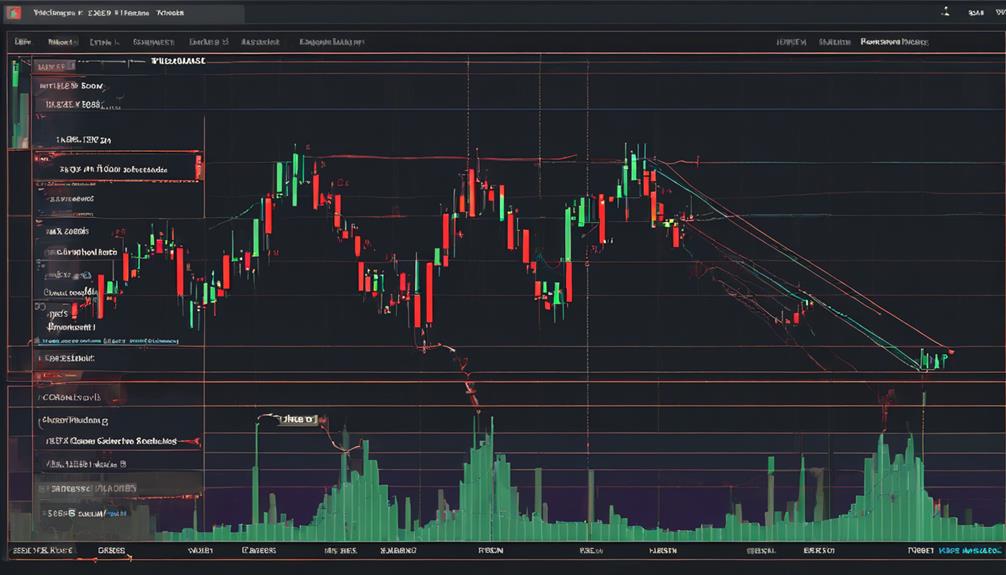
To enhance trading efficiency, integrating pivot point indicators into a trader's decision-making process is essential for optimizing trade planning and execution. These technical analysis indicators, including Fibonacci pivot points, provide traders with valuable reference points derived from the previous day's price action. By incorporating pivot points into their strategy, traders can make informed decisions based on key support and resistance levels, leading to more precise trade entries and exits. The use of pivot points streamlines the decision-making process, reducing emotional trading and improving overall trade outcomes.
Moreover, integrating pivot points into trading strategies enhances risk management by helping traders set realistic profit targets and manage stop-loss levels effectively. This integration also increases trading efficiency by providing clear guidance for trade execution and minimizing ambiguity in decision-making. Overall, utilizing pivot point indicators optimizes trade planning processes, increases trading precision, and contributes to a more efficient and effective trading strategy.
Utilizing Pivot Points for Profitability
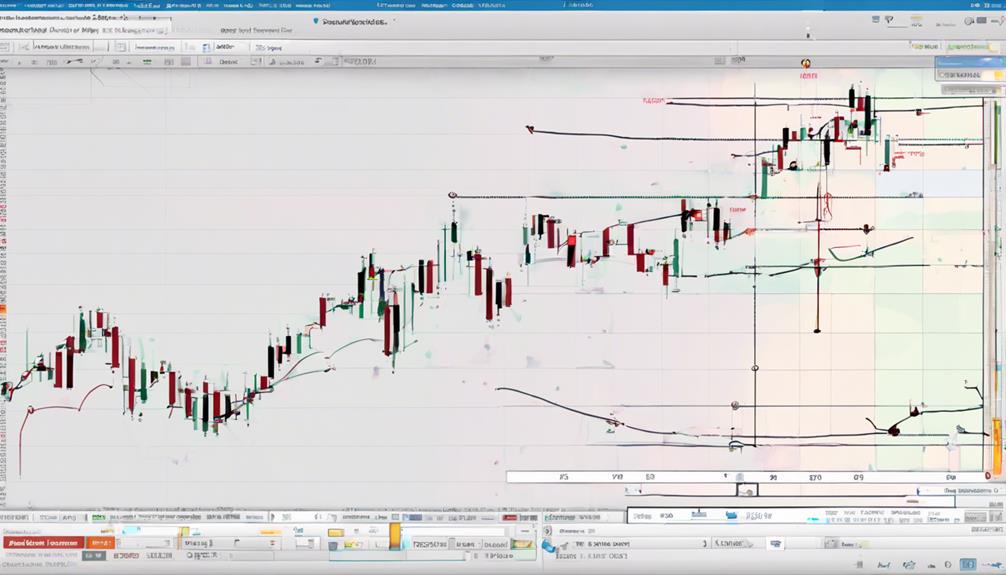
Pivot points serve as important reference levels for traders to anticipate potential price movements in the market. By incorporating pivot points into their strategies, traders can pinpoint ideal entry and exit points, thereby enhancing profitability.
Utilizing pivot points effectively can help traders make informed decisions, manage risks efficiently, and ultimately improve their overall trading performance.
Pivot Point Calculation
When considering the utilization of pivot point calculations in trading strategies for enhanced profitability, it is essential to comprehend the intricate relationship between support and resistance levels derived from these calculations.
- Pivot points are calculated using the high, low, and close prices from the previous trading session to determine key support and resistance levels.
- Support levels in pivot point calculations are derived as 2 times the pivot minus the high, pivot minus the trading range, and the low minus 2 times the high minus the pivot.
- Resistance levels in pivot point calculations are calculated as 2 times the pivot minus the low, pivot plus the trading range, and the high plus the pivot minus the low.
- Pivot points can be automatically calculated using trading tools, providing traders with clear reference points for strategic decision-making.
Trading Strategies With Pivots
Traders can leverage pivot points as strategic tools to enhance profitability and optimize decision-making processes in their trading strategies. Pivot points provide important support and resistance levels that aid in determining entry points and setting stop-loss orders. By incorporating pivot points into their trading strategies, traders can effectively manage risk and improve trade precision.
These key levels act as reference points, assisting traders in making objective decisions and reducing emotional bias. Utilizing pivot points enables traders to simplify their trade planning process, enhance technical analysis, and potentially achieve more consistent trading results.
Maximizing Forex Trading Profits
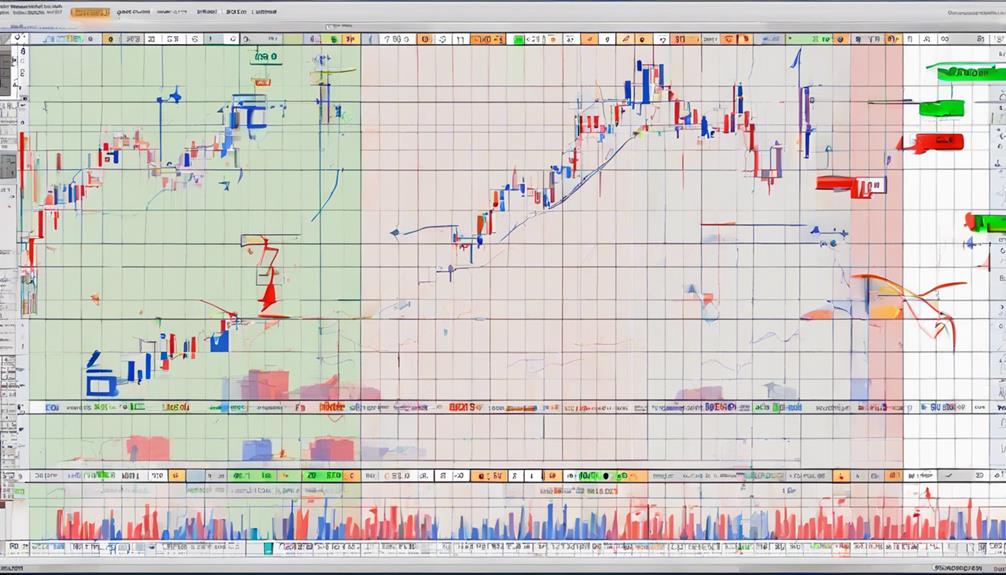
To maximize profits in forex trading, understanding how pivot points function as key support and resistance levels is essential for traders. Utilizing pivot points effectively can greatly impact trading outcomes. Here are four vital ways traders can maximize their profits using pivot points:
- Identifying Support and Resistance: Pivot points act as dynamic levels that help traders identify potential support and resistance zones in the forex market.
- Determining Entry and Exit Levels: By utilizing pivot points, traders can pinpoint ideal entry and exit points for their trades, enhancing precision and profitability.
- Forecasting Market Trends: Pivot points assist traders in predicting market trends based on price movements around these key levels, enabling informed decision-making.
- Enhancing Trading Strategies: Incorporating pivot points into trading strategies can provide traders with a structured approach to maneuvering the forex market, leading to improved trading performance and increased profits.
Effective Day Trading Strategies
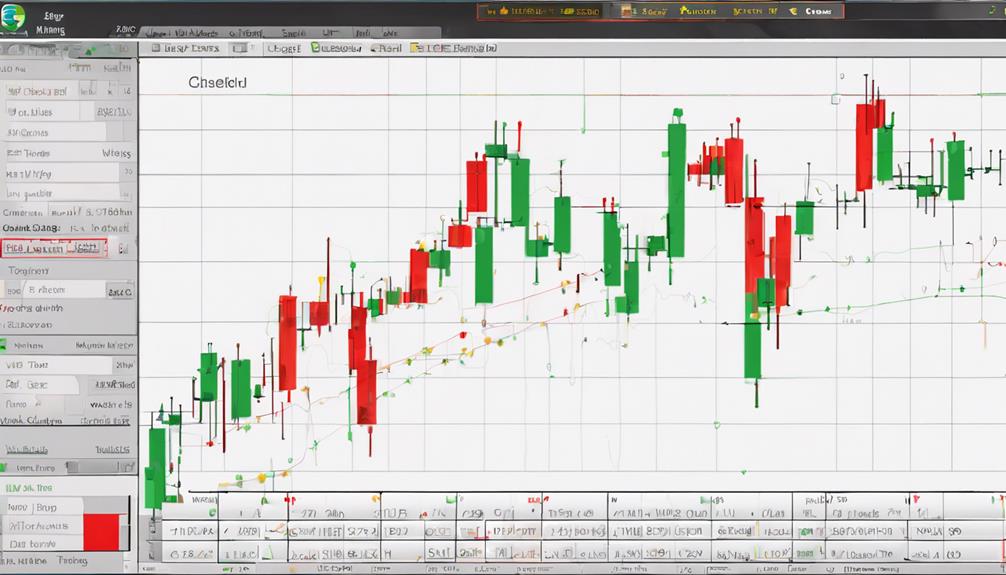
Effective day trading strategies harness pivot points to pinpoint key support and resistance levels for precise trade entries and exits, facilitating strategic decision-making for traders. By utilizing pivot points, traders can identify ideal points to enter or exit trades based on price action around these levels.
One common strategy is the bounce strategy, where traders capitalize on price reversals at support or resistance levels identified by pivot points. Additionally, breakout strategies are employed to enter trades as prices move beyond key pivot levels, signaling potential trend continuation.
Adjusting pivot point settings to a daily timeframe enhances the reliability of day trading strategies across various chart intervals, providing a broader perspective for decision-making. Integrating pivot point rejections into trading strategies further enhances trade entry and exit decisions, ultimately leading to increased profitability for day traders seeking to optimize their trading approach.
Daily Pivot Point Usage
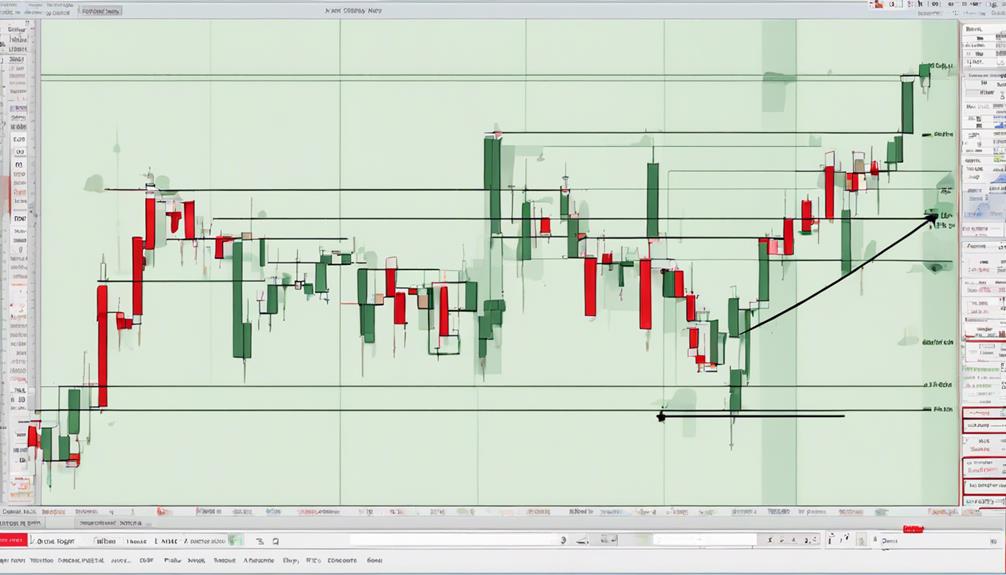
Utilizing daily pivot points in trading analysis provides traders with essential reference levels derived from the previous day's high, low, and close prices. Daily pivot points are vital for intraday trading as they offer insights into potential price movements and help identify key support and resistance levels for making informed trading decisions.
Here are four key ways traders can benefit from incorporating daily pivot points into their trading strategy:
- Support and Resistance Levels: Daily pivot points act as dynamic levels of support and resistance, guiding traders on potential price reversals and breakout points.
- Trading Decisions: Traders can use daily pivot points to determine entry and exit points, aiding in the execution of well-informed trading strategies.
- Intraday Trading: Daily pivot points are particularly useful for intraday traders due to their focus on the previous day's closing price, offering more accurate levels for short-term trading decisions.
- Price Movements: Monitoring daily pivot points can help traders anticipate price movements and adjust their strategies accordingly, enhancing overall trading performance.
Boosting Forex Trading With Daily Pivot Points
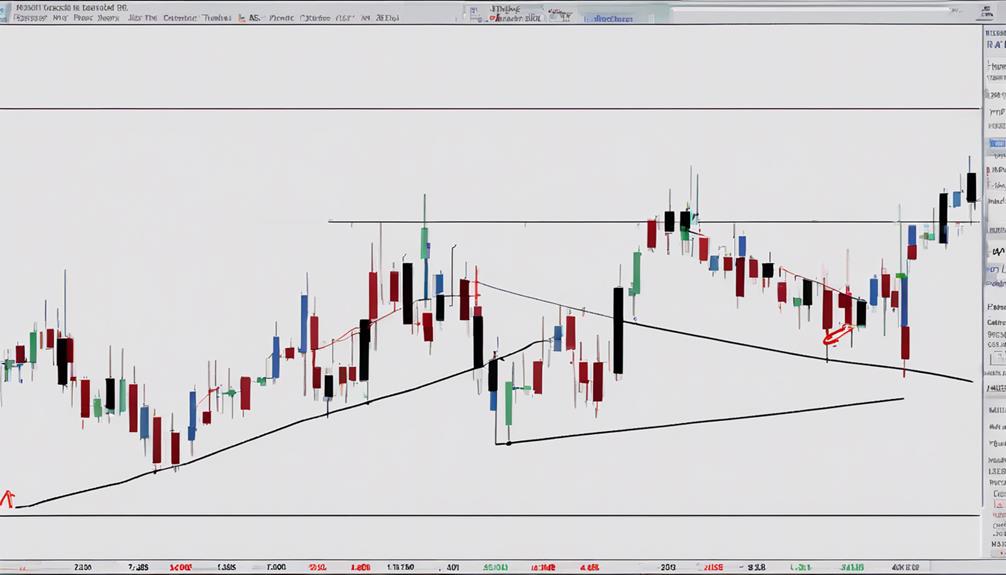
Daily pivot points are instrumental in guiding forex traders by providing key levels of support and resistance. By strategically incorporating these levels into trading decisions, traders can enhance their entry and exit points.
Utilizing daily pivot points efficiently on shorter timeframes can lead to improved trading outcomes during active market sessions.
Daily Pivot Point Strategy
Incorporating pivot point indicators into a forex trading strategy can greatly enhance traders' ability to analyze potential price movements and make well-informed decisions. Daily pivot points serve as vital levels indicating potential support and resistance areas in trading strategies within the forex market.
Here are four key aspects of utilizing daily pivot points effectively:
- Determining Entry and Exit Points: Daily pivot points assist traders in timing their trade entries and exits more accurately.
- Maximizing Profit Potential: By incorporating daily pivot points into their strategies, traders aim to maximize profits in both day trading and swing trading scenarios.
- Enhancing Decision Accuracy: Adjusting pivot point settings to a daily timeframe can significantly improve the accuracy of trading decisions.
- Widespread Utilization: Traders widely adopt daily pivot points due to their effectiveness in enhancing trading strategies and decision-making processes.
Calculating Pivot Point Levels
The calculation of pivot point levels plays a vital role in enhancing forex trading strategies and bolstering traders' ability to predict price movements effectively. Daily pivot points are determined using the high, low, and close prices from the previous trading day, providing essential support and resistance levels.
These levels serve as key reference points for traders to make informed decisions on entry and exit positions in the market. By accurately calculating pivot points, traders can better anticipate potential price fluctuations, thereby improving the overall accuracy of their trading forecasts.
Utilizing pivot points efficiently enables traders to optimize their strategies, manage risk effectively, and ultimately enhance their profitability in the forex market.
Using Pivot Points Efficiently
Utilizing pivot points effectively in forex trading can greatly enhance decision-making and optimize trade entries and exits, particularly when applied to shorter timeframes like the 15-minute chart. When using daily pivot points, traders can benefit from the following strategies:
- Identifying Market Conditions: Daily pivot points help traders gauge the overall market sentiment, with trading above indicating a bullish outlook and trading below signaling bearish tendencies.
- Utilizing Support and Resistance: Pivot points serve as pivotal levels of support and resistance, guiding traders in setting stop-loss orders and profit targets.
- Fine-Tuning Technical Analysis: Incorporating pivot points into technical analysis can provide additional confirmation for trade setups based on other indicators.
- Adapting to Changing Market Conditions: Pivot points can assist traders in adapting quickly to evolving market dynamics by offering clear reference points for decision-making.
Best Pivot Point Trading Strategies
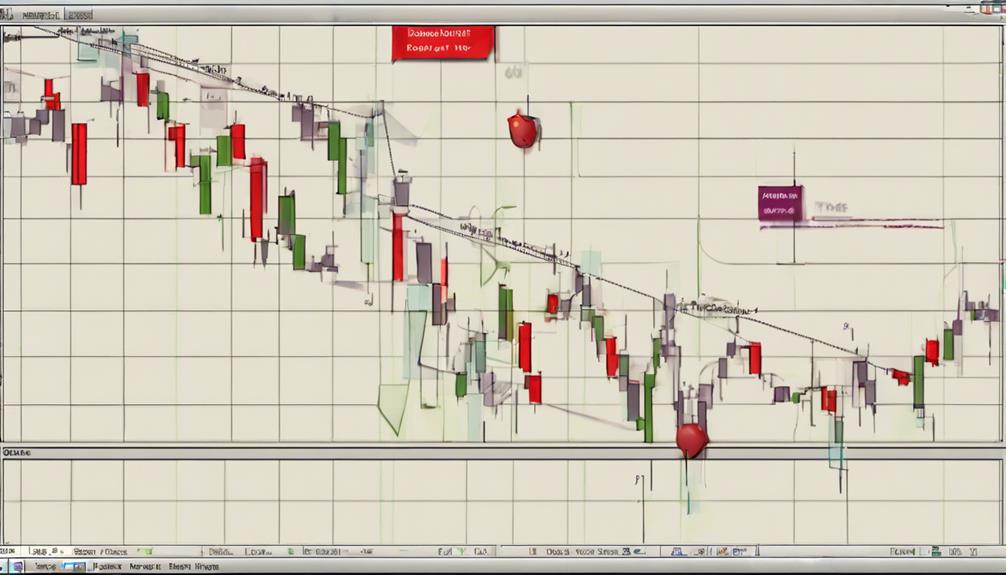
When implementing pivot point trading strategies, traders often leverage the pivot point bounce and breakout techniques to capitalize on market movements efficiently. The pivot point bounce strategy involves buying at support levels and selling at resistance levels based on pivot points. On the other hand, the breakout strategy entails entering trades when the price breaks through a pivot point level, indicating a potential trend continuation. By incorporating pivot point rejections in trading strategies, traders can confirm trade entries and exits for improved accuracy. Utilizing daily pivot points on a 15-minute timeframe can provide strategic trading signals for intraday trading. Trading pivot points during the opening of the London or New York sessions can enhance trading results due to increased volatility and volume.
| Pivot Point Trading Strategies | Description |
|---|---|
| Pivot Point Bounce Strategy | Buying at support levels and selling at resistance levels based on pivot points. |
| Breakout Strategy | Entering trades when price breaks through a pivot point level, indicating a potential trend continuation. |
| Incorporating Rejections | Confirming trade entries and exits for improved accuracy. |
| Daily Pivot Points | Providing strategic trading signals for intraday trading. |
Implementing Step-by-Step Trading Strategy
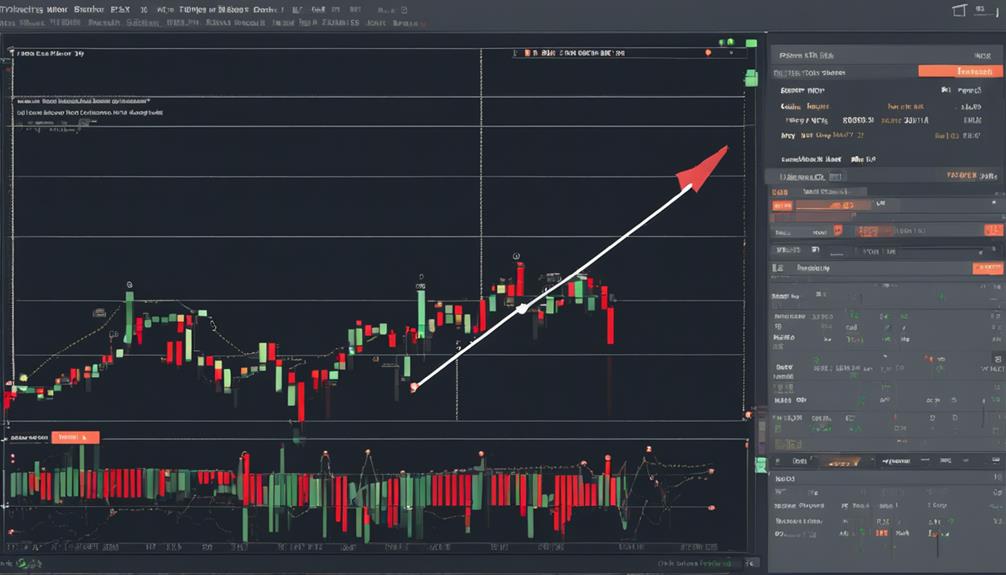
To effectively implement a step-by-step trading strategy, traders must first establish a clear framework outlining specific actions and decision points throughout the trading process. Utilizing pivot point indicators can greatly enhance trade decision-making, including identifying support levels, resistance levels, trade entries, and risk management strategies.
Here are four key steps to effectively implement a trading strategy using pivot points:
- Identify Support and Resistance Levels: Utilize calculated support levels and resistance levels to determine potential entry and exit points for trades.
- Execute Trade Entries: Use pivot points to guide the timing of trade entries, ensuring ideal entry points based on market conditions.
- Implement Risk Management Strategies: Utilize pivot points to set stop-loss orders and determine risk levels for each trade, enhancing overall risk management practices.
- Utilize Pivot Points for Breakout Trades: Identify breakout opportunities by using pivot points to confirm potential breakout levels and enter trades accordingly.
Frequently Asked Questions
What Indicator Works Best With Pivot Points?
When considering indicators to pair with pivot points, factors like moving averages, Fibonacci retracement, MACD divergence, Bollinger Bands, and RSI overbought levels should be prioritized.
Moving averages can provide trend confirmation, Fibonacci retracement levels offer potential reversal zones, MACD divergence signals momentum shifts, Bollinger Bands highlight volatility, and RSI overbought conditions warn of potential pullbacks.
Combining these indicators with pivot points can enhance trade analysis and decision-making processes effectively.
Do Professional Traders Use Pivot Points?
Professional traders widely utilize pivot points in their trading strategies to enhance market analysis, manage risk, and optimize trading decisions. These key levels assist in identifying potential reversal points and trend directions, aiding traders in setting profit targets and refining trade entries and exits.
Pivot points are an essential component of technical analysis, offering valuable insights that are instrumental in guiding trading psychology and decision-making processes within the financial markets.
How Do You Master Pivot Points?
Mastering pivot points in trading involves understanding how to utilize them within trading strategies. By incorporating pivot points into technical analysis, traders can identify key price levels for support and resistance.
This understanding allows traders to make informed decisions based on pivot point calculations and adjust their strategies according to market volatility. Recognizing candlestick patterns in conjunction with pivot points can enhance trade entry and exit points for best trading outcomes.
What Is the Formula for Pivot Point Indicator?
The formula for the pivot point indicator involves calculating the central pivot point (PP) by summing the High, Low, and Close prices and dividing by 3. Support levels are derived by subtracting the previous day's values from the PP, while resistance levels involve adding these values to the PP.
This calculation process holds historical significance in technical analysis, aiding traders in identifying key price levels for implementing effective trading strategies based on price action.
Conclusion
To sum up, mastering pivot point indicators is essential for traders looking to make informed decisions in the market. By understanding the basics, importance of support and resistance, and implementing calculated pivot points in trade planning, traders can enhance their decision-making process and boost their forex trading success.
With the right pivot point trading strategies in place, traders can effectively navigate the market and capitalize on opportunities that arise. Stay tuned for more insights on mastering pivot point indicators in future articles.


